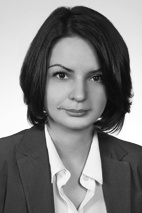Our Annotations
Overview
We present two annotations for the Winterreise dataset: Temporal positions of the stanzas and a structure-based analysis for each piece of »Winterreise«.
Stanzas: Simple and objective segmentation indicating the stanzas of the underlying poem. The boundaries of the stanzas are determined in the musical piece and thus each stanza represent a segment. Note that in some cases a stanza is repeated or missing, thus the segments are labeled by the number of the corresponding stanza.
Structure:
Segmentation of a musical piece due to purely musical criteria without considering the poem's stanzas is far more complex than the stanza segmentation mentioned above.
The most important criteria of such segmentations are exact as well as varied repetitions, key changes, and – in rare cases – text-based alternations. There is no hierarchy of these criteria in general nor exists such a thing as a "true" segmentation for each song.
We attempted to set musically meaningful segment boundaries. In some cases we suggest more than one segmentations for the very same piece of music. Every segmentation is motivated and explained by a short text.
Description of the Labelings
When analyzing musical pieces, different segments are usually indicated by different capital letters, starting with A, B, and so on. This might be sufficient for simple pieces but in general – especially in case of the pieces of »Winterreise« – we have to distinguish between several kinds of diversity.
- A, B, C: Two segments are labeled by different letters if they consist of different musical material.
- A1, A2: In case of a motivic relationship but not exact repetion, two different segments are labeled equally. The number indicates the occurence of the musical material within the piece. For example, A2 and A3 describe the first and second variation of A1.
- Aa, Ab, Aa1, Aa2: Sometimes, segments are repeated only partwise over the course of a musical piece. In this case, we split the total segment into multiple parts to indicate the particular repetitions exactly. The small letter describes the position of such a part within the actual segment. If necessary, an additional number indicates a variation of a specific part.
In near future, we will provide both file types, audio as well as annotations for download directly from the demo pages. Please notice the specific licence for each recording. Furthermore, we will provide score representations with our annotations as overlays. The original PDF file was published at IMSLP as public domain.
About the annotators

Polina Gubaidullina began studying violin at the age of five in the Ufa Specialized Secondary Music School. She won several prizes in Russia and Germany. After receiving her "Magister artium" degree (Master of arts) in Musicology from the University of Bonn in 2011, Polina finished her Bachelor's degree (BSc) in Computer Science (Bonn, 2014).

Harald G. Grohganz got most of his musical education at Limburg Cathedral Boy's Choir. He reached his "Diplom" degree (Master of Science) in Mathematics from the University of Bonn in 2010. After 4 fantastic years of research on Music Information Retrieval, esp. Music Structure Analysis, Harald received his PhD degree in 2015.
